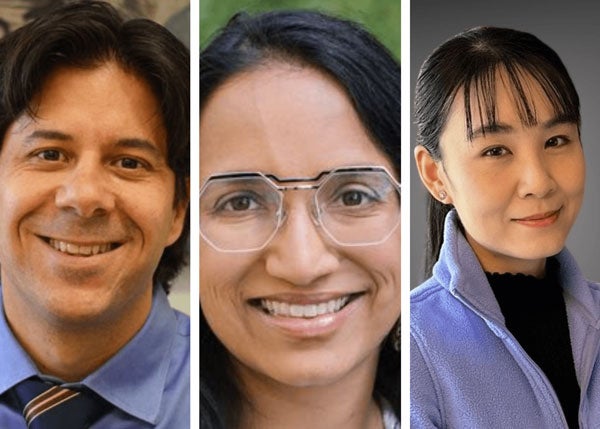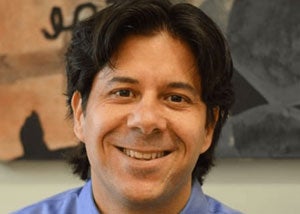Celebrating 20 Years of Innovation: UCLA CART Announces Pilot Grant Program Awardees!
Fall 2023

Exciting developments are on the horizon at the UCLA Center for Autism Research and Treatment (CART) as we announce recipients of the 20th UCLA CART Pilot Grant Program. This program funds one-year pilot and/or feasibility studies for biomedical, epidemiological, or behavioral research. The purpose of these awards is to foster interactions and interdisciplinary research projects in the basic and clinical areas of autism. The new grantees are:
Project title: Molecular drivers of developmental network desynchronization in wild-type and Fmr1-/- mice

Carlos Portera-Cailliau, MD, PhD
Professor, Departments of Neurology and Neurobiology
David Geffen School of Medicine, UCLA

Aparna Bhaduri, PhD (Co-Investigator)
Assistant Professor, Department of Biological Chemistry
David Geffen School of Medicine
In the developing brain neurons are already constantly active. But as opposed to the adult brain, where neurons fire at low levels and mostly independently from one another, in the immature brain their activity manifests as intermittent large bursts of synchronous firing, separated by long periods of silence. This synchronous pattern activity is believed to be important for neurons to connect with each other and form units that perform similar functions (for example all the neurons that eventually respond to tactile information from the index finger). As the brain matures, brain activity eventually undergoes a drastic transition to a desynchronized state in which neurons fire largely independently of each other. This is computationally much more efficient because across time the activity across the entire network can code much more information than if all the neurons fire together. This desynchronization of brain activity is the most dramatic and abrupt change in an otherwise slow and gradual process of brain development, and it occurs in most animal species that scientists have looked at. In humans it occurs after birth; in rodents at around 12 days of age. Unfortunately, little is known about the mechanisms that bring about this remarkable transition. We want to test the hypothesis that changes in the expression of certain genes can drive this brain desynchronization. For example, genes that enhance the effects of inhibitory neurons (which provide a brake to slow down brain activity), or genes that cause excitatory neurons to fire less, could change drastically around this point of transition.
From a clinical standpoint this issue is of great importance. Prolonged brain synchrony predisposes immature brain network to seizures, and a delay in the neuronal desynchronization is associated with neurodevelopmental conditions, as has been observed in models of Fragile X Syndrome (FXS). To address this knowledge gap we propose to identify genetic programs that bring about this major network transition (or its delay in FXS). First, we will use state-of-the-art recording techniques to document the exact timing of this network desynchronization. Next, we will to use the latest high-throughput sequencing technologies to document changes in gene expression of single cells in the brain before and after desynchronization. We will compare gene expression between the FXS condition and healthy controls. Candidate genes whose expression changes (increases or decreases) drastically at the time of desynchronization will be further validated at the protein level.
Project Title: Investigating Neural Circuit Mechanisms Underlying Prosocial Behavior and Their Disruption in Autism Spectrum Disorders

Ye Emily Wu, PhD
Adjunct Assistant Professor, Department of Neurology
David Geffen School of Medicine, UCLA
Humans and other social animals possess the capacity to perceive and empathize with the emotions and states of their conspecifics, and to further engage in prosocial behaviors, such as comforting, helping, and resource sharing, to improve others’ well-being. These abilities are crucial for enhancing social affiliation and cohesion, whereas disruption in these abilities can significantly impede an individual’s ability to engage in social interaction and form social connections. Impairments in social communication and interaction are core symptoms in autism spectrum disorders (ASD). A deeper investigation of the neural circuit mechanisms of empathy-related prosocial behavior can provide crucial insights into the neural basis of social cognition and affiliative social behavior, and how their disruption may contribute to ASD. Given the pivotal roles of empathic and prosocial capacities in fostering social affinity, such insights may help develop interventions or strategies to improve the social well-being of individuals with ASD. In this project, we propose to determine the roles of ASD-implicated brain areas in regulating prosocial behavior using a newly developed mouse model. Furthermore, we will investigate whether prosocial interaction and its neural encoding are altered in a mouse model of ASD. This line of research will offer critical insights into the neural circuit mechanisms of affiliative social behavior and its disruption in ASD.
About the UCLA CART Pilot Grant Program
Now in its 20th year, UCLA CART supports groundbreaking pilot and feasibility studies in the domains of biomedical, epidemiological, and behavioral research through the UCLA CART Pilot Grant Program. Grants awarded through the UCLA CART Pilot Grant program are intended to foster interactions and interdisciplinary research projects in the basic and clinical areas of autism as well as building upon UCLA CART’s mission and current research activities. Serving as catalysts for innovation, many previous UCLA CART Pilot Grant investigators having secured substantial additional funding and published their findings. For more information about how you can become our partner and explore ways you can support the UCLA CART Pilot Grant Program, please contact Chris Carbado, Senior Director of Development for UCLA Health Sciences at 310-562-6488 or ccarbado@mednet.ucla.edu.

